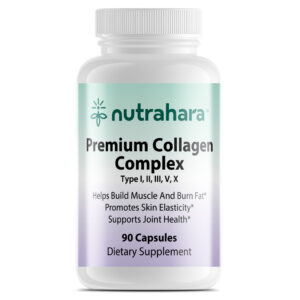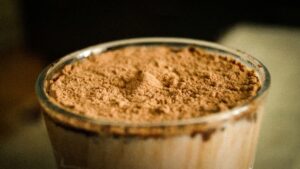
Nutrahara Blog
Nutrahara Blog
How To Use Resistance Bands To Build Muscles
Skeletal Muscles, Protein Powder, Calisthenics and Resistance Bands To Build Muscles
When it comes to building muscles the right way, there are never too many questions to ask. Questions range from how many calories build muscle, how to build muscle in the legs, how to use resistance bands to build muscle, build muscle recipes, protein powders, and so on. In this article, we will discuss all there is to know about muscle building.
What Are Skeletal Muscles?
Anatomically, skeletal muscles comprise multiple parallel cylindrical fibers that produce force when they contract. The process by which the muscle contracts is what allows for external movement in humans to occur.
Skeletal muscles do not only function to move but also functions to prevent movement. This includes resisting gravity to maintain posture. To enable the body to maintain any balanced position or keep the body upright, small and constant adjustments of the skeletal muscles are needed for this action. Muscles also prevent skeletal structure deformation or damage, prevent joints and bones from excessive movement, and maintain skeletal stability.
The body is constantly recycling and renewing protein building blocks or amino acids in your muscles. This means that you lose muscle size when your body uses more protein than it adds. If the net protein synthesis remains the same, then there will be no measurable change in muscle size. Subsequently, if your body stores more protein than it removes, your muscles will increase.
The key to building and remodeling your muscle is to increase protein deposition while reducing the rate of protein breakdown. The process of increasing muscle mass is called muscle hypertrophy and it is the primary goal when you engage in resistance training. The process of muscle building is driven by many factors, including the availability of amino acids and other nutrients and also hormones like testosterone and growth hormones.
To be able to gain new muscle tissue, the primary tools for enhancing your body’s rate of protein synthesis are getting sufficient amounts of build muscle protein powder, nutrients rich in calories and most importantly performing resistance training.
How Do Muscles Grow?
When you exercise, you put extra tension on your muscles than they are used to. This action causes microscopic tears in your muscle fibers, causing damage to your muscles. Following a workout, your body restores the damaged muscle fibers through a cellular process that joins the muscle fibers back together while also forming new muscle protein strands called myofibrils.
Eventually, your muscles adapt to the stress and so you will need to make sure they are getting enough stress progressively. If you can accomplish this, you will eventually increase the size of your muscles. This is referred to as muscle hypertrophy.
However, if your recovery does not include a high-protein diet, proper sleep, and rest days, the effectiveness of your muscle growth will be reduced even with enough tension or strength. You must also increase the stress and tension you place on your muscles per time, so your muscle growth will not plateau.
When the right amount of resistance training is carried out, it allows your body’s hormonal system respond toward building muscle. It also requires sufficient protein and energy to ensure the process results in muscle gains as opposed to muscle losses (1).
Resistance training with moderate to heavy loads combined with a relatively high protein intake is the main training strategy for building muscle mass. Consuming the best build muscle breakfast containing carbohydrates, proteins, and fat is also a good way of bulking your muscles. Examples include pancakes, chicken omelets, greek yogurt, and avocado toast.
Most people think that having bigger muscles produce the most force. You should know that when comparing build muscle vs strength training, strength-trained muscles usually will have overall better muscle fiber quality.
Despite having massive muscles and a larger overall frame, you might have a slight strength advantage and higher performance standards. The best training methods will vary based on whether you want to gain strength or more muscle.
As was already said, hypertrophy involves gaining muscle size through a focused exercise that attempts to gradually increase your weightlifting volume (sets x reps). The purpose of strength training is to build muscle power and the capacity to lift heavier weights. Strength is the quality of being strong. The heavy lifting required to achieve this is above 85%.
What Is The Difference Between Strength Training and Muscle Growth?
Your routines should focus on multi-joint compound lifts, such as bench presses, squats, deadlifts, and pull-ups since one of the objectives of strength training is to generate maximum force.
To achieve a large amount of muscle growth with hypertrophy training, you need to combine isolation and compound workouts. Although it’s not the best way to develop functional strength, trying to train isolated muscle groups, such as with hammer curls and leg extensions, can be useful for promoting the growth of certain muscle groups.
Throughout these training phases, you should change your exercise progression as well. While you use lesser weights during hypertrophy training, increasing sets and reps, loading, or adding complexity to an exercise are all excellent strategies to keep developing muscle. squats, deadlifts, bench presses, and pull-ups, as the objective of strength training, is maximum force generation.
Is It Possible To Build Muscle With Protein Powder?
Protein powders are an excellent way to augment your lifestyle, especially when building muscle with protein powder. By adding amino acids, whey protein, or nutrients, you can stimulate muscle growth and recovery.
Consuming a good protein powder can also help you in preventing muscle mass loss. These supplements also improve stamina, strength, and endurance, so you can perform high-intensity workouts. We will discuss how many calories build muscle but evidence suggests taking 20 to 40 grams of protein at a time for people who want to boost the muscular building that generally happens with exercise (roughly the amount found in a can of tuna).
Excessive amounts merely add calories and may even inhibit the ability to grow muscle. Hence, be careful of consuming multiple scoops of build muscle protein powder at once as it is probably not beneficial. Although plant-based powders frequently include less protein, they shouldn’t be discounted as a possibility. Like whey, a protein derived from milk that is praised for its high quality and speedy absorption, rice and pea protein, for instance, have been demonstrated to boost muscle building similarly.
Resistance Bands To Build Muscles
Is it possible to build muscle with resistance bands? Many people assume that muscles can only be built in the gym by lifting barbells, dumbells, and other conventional heavy-weight instruments. However, you can build muscle and strength using resistance bands as well. If you’re looking for a convenient, low-cost, portable, and easy-to-use instrument at home to gain muscle strength, the resistance bands to build muscle should be your go-to. It is also a convenient at-home strength training workout equipment for those who can’t afford a gym membership or prefer the privacy and efficiency of working out at home.
Resistance on a muscle can be carried out in several ways and resistance bands may provide a logical way to do so. So, what differentiates a weighted instrument from a resistance band is the resistance curve. Lifting a heavy weight means the same amount of weight is maintained throughout a range of motion.
However, with a resistance band, it gets harder as you stretch it the more. For instance, the stress of lifting a heavy weight during a bicep curl use will be largely in the center of the exercise. Whereas the tension in the band will remain in the middle, when it stretches out further into the top range, it will become even more challenging. Gains in strength and muscle can result from this. Anything that nearly exhausts a muscle will promote growth naturally.
Swimming is also a resistance exercise like weightlifting and using resistance bands to build muscle. Swimming is a lot faster and more efficient way to build muscle swimming than standard aerobic exercises like jogging and biking. It increases muscle ability and endurance to continually push and pull against the water, which has a higher resistance level than air. You’ll quickly build muscle swimming and get a fully toned swimmer’s figure which helps you build muscle in arms and also build muscle in legs.
5 Resistance Band Exercises To Build Muscles
Here are five various resistance band exercises that can be carried out when trying to build muscles and increase muscle strength.
- Squats: Grab both ends of the resistance band while standing on it. Extend your knees up to a standing posture while clutching the band and standing in a squat. Repeat by descending once more.
- Chest press: Holding both ends of the resistance band with your hands, wrap it behind your back. Push the band out in front of you while straightening your elbows while keeping your arms at your sides and holding for one second.
- Elastic band rows: Attach the band securely to a door. Hold the band with both hands and rest backward as you bend your elbows. Ensure to keep elbows at the side of your body.
- Biceps curl: Step on the resistance band with your feet and with your arms by your side, hold the bands and draw up your hand by bending your elbow. Hold for a second and relax your elbow while still holding the band. Keep your palm face up all the time.
- Clamshells: Lie on one side, and place one leg on the other with both knees slightly bent. Keeping your feet together, loop a resistance band around your thighs and lift your knee. Switch sides after each set.
How Many Calories Build Muscle?
It is important to note that while calculating how many calories build muscle, not all protein values are the same when it comes to muscle building. Always keep in mind that the higher the biological value of the protein consumed, the more it is used for muscle building. Stick to high-quality proteins like milk, eggs, casein, whey, fish, or lean meats to maximize muscle growth. Incorporating lesser quality from plant-based sources, such as nuts and beans, can, however, be a valuable protein source for muscle building.
To gain muscle mass, you must have an excess of calories and protein stored up in your system, which is gotten by eating small meals throughout the day. To increase muscle mass, most adults need about 44 kcal / kg of body weight. The daily calorie requirement for a male weighing 180 pounds (82kg) is 3600 calories. To gain extra muscle, you’ll need to eat about 100-300 kcals.
How To Gain Weight With Calisthenics
Calisthenics is doing exercises that rely on your body weight. These exercises are usually performed using varying levels of intensity and rhythm. This allows for the development of endurance, strength, coordination, and flexibility. When you build muscle calisthenics, you can do them anywhere without any equipment. Here are some of the exercises you can carry out to build muscle calisthenics;
- Push-up: This focuses on helping you build muscle in arms and shoulders. You can start with doing a tolerable number and keep increasing daily as you build capacity.
- Handstand push-ups: This helps you build muscles in your core, shoulders, and arms. You can do this by standing on your palms with your body raised. Bend your elbows and lower your body towards the floor. Raise yourself back up to the original position and repeat. If you can not do a handstand yet, use a wall as support.
- Air Squats: This helps build your hamstring, glutes, and quads. It can be done by bending your knees with your feet shoulder-width apart. Lower your body downwards and maintain a straight back. Squat till your thighs are parallel to the floor. Repeat several times.
- Lunges: To perform a lunge, start by standing on your feet hip-width apart. Move a foot forward and lower your whole body towards the floor. Maintain a back straight and lunge down so that your thigh is parallel to the floor. Push yourself back up to the starting position and repeat the process.
Summary
Building muscles can be done in various ways as there is no size fit all program. Learn about your metabolism and do what is right for you. Exercise and diet are very important. Calculating your protein needs, and tracking your food in a diary or app helps in planning well-balanced meals.
References
- https://www.ncbi.nlm.nih.gov/pmc/articles/PMC7889060/
- https://www.healthline.com/nutrition/high-protein-diet-plan
- https://www.ncbi.nlm.nih.gov/pmc/articles/PMC6950543/#:~:text=Higher+RT+volume+(28%E2%88%9230,populations+%5B12%2C20%5D
- https://www.frontiersin.org/articles/10.3389/fnut.2019.00131/full
- https://nutritionandmetabolism.biomedcentral.com/articles/10.1186/1743-7075-5-36?wptouch_preview_theme=enabled
Written by the Nutrahara Team
This article was prepared by the expert team at Nutrahara, which includes experienced nutrition scientists and naturopaths dedicated to advancing women’s health through natural wellness solutions. We combine scientific research with holistic practices to help you live your healthiest life.
Connect with us on LinkedIn to stay updated on the latest in women’s health and wellness.







